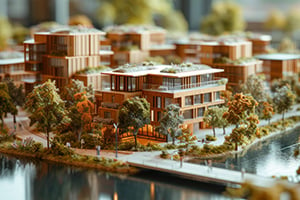Are you wondering, what are the best light bulbs to buy, or are you considered replacing your lights at home to save money on your power bill? If so, there are four main factors you need to consider when determining what the best replacement light bulb or bulbs are.
Here are the four (4) most important factors to consider when purchasing new light bulbs:
1. The “color” of the bulb. This is measured in degrees of Kelvin (K) on a scale from 1,000 to 10,000. Also, you will sometimes see this depicted by three main categories of color:
i. “Warm White” or “Soft White” – (2,000K – 3,000K) – orange to yellow-white appearance
ii. “Cool White” – (3,100K – 4,500K) – neutral white or slightly blue-tinted white
iii. “Daylight” – (4,600K – 6,500K) – blue-white light
Color is one of the most important considerations because the different colors of light affect our brain chemicals, moods, and circadian rhythm (often referred to as our “body clock”). Humans have developed internal “body clocks” to help with the production of chemicals, digestion, and many other functions including sleep. One of the main factors our “body clocks” que off is light. In the morning and during the day, for example, the sun is typically very bright. Bright or blue daylight signals our bodies to stop producing melatonin which makes us sleepy. Then, at dusk, sunlight becomes more yellow, orange, and even red, which stimulates the production of melatonin and helps us sleep.
With this in mind, you can determine what color light bulbs to buy for different rooms around your house.
“Warm White” or “Soft White” bulbs are best in your living room, bedroom, and any rooms that you would like to relax in. Most often, these are 2700K bulbs.
“Cool White” bulbs would be good for work and office spaces.
“Daylight” or higher K blue lights are good for reading lights (not before bed though), exercise rooms, and department stores. These are the worst for your bedrooms because they can interrupt your circadian rhythm and sleep cycle.
Personally, at home, I prefer “Warm White” or “Soft White” bulbs throughout my house because I do not want the blue lights throwing my circadian rhythm out of sync.
Protip: the light color (in degrees of Kelvin) can usually be found on the back of the box of light bulbs as depicted in the photo below:

2. The wattage (w) or amount of power the bulb consumes. This is straightforward. The lower the wattage of a bulb, the less electricity they consume. The only confusing issue with wattage is that often light bulb packaging will have two different wattage numbers listed. Often, they will list both the apparent wattage and the actual wattage consumed. In this example below, they are trying to convey that the bulb emits light similar to a 60 watt bulb, but on the back of the package, you can see it actually only consumes 9.5 watts. The actual energy consumed is what you need to pay attention to, and most packaging will also estimate your average annual energy consumption, which is very helpful when comparing bulbs to see which is more energy efficient.


3. The lumens (short for luminous flux or luminosity) emitted by a light bulb is the third main thing to pay attention to. Lumens are a measure of how bright the bulbs are. The higher the lumen, the brighter the bulb. If you have a lot of light fixtures in a room, you may only want bulbs that do not produce a lot of lumens. On the other hand, if you only have one light fixture in a room, you may need a bulb that produces a lot of lumens.

4. Price. This may be an obvious one, but nonetheless, price is very important to most people. There are three factors to consider regarding price:
i. Initial cost or price tag of the bulbs
ii. Estimated annual energy consumption cost
iii. How long the bulbs last
For the nerds out there, the equation to consider for finding the best deal would be:
(Initial cost of the bulb / Number of years the bulb is expected to last) + *Estimated annual energy consumption cost = Total annual estimated cost of bulb
*For the best decision, you can even adjust the estimated annual cost by considering the amount of hours/day the bulb will be used and how much you pay for electricity in your area.
Too much information for determining what are the best light bulbs to buy? Just don’t forget to consider the annual cost of the bulb and how long the bulb will last. In most cases, these two factors affect the cost of the bulbs more than the initial price.

Other things to consider when purchasing the best light bulb include:
A) Which type of bulb to buy:
a. Incandescent light bulbs are the original light bulbs and for the most part have been phased out by now. These are out of date because they operated by heating a metal filament inside of the light bulb to produce light. They use the most energy and produce a lot of heat.

b. Compact fluorescent lamps (or CFLs) are the second-best choice of light bulb. Although they are much more energy-efficent and operate cooler than incandescent light bulbs, they contain mercury and are not as efficient (in most cases) as LEDs.
c. LEDs (or light emitting diodes) are the best type of light bulb you can buy. They work by passing electrons through solid matter and illuminating diodes. They are very energy efficient and cool (literally, they operate at a lower temperature).
B) Some LED bulbs are not dimmable. If you have dimmable lighting fixtures, make sure you buy bulbs that are dimmable.
C) Do you have enclosed fixtures? Although LEDs operate at lower temperatures, they still produce heat. The heat dissipates away from the bulb (usually at the base away from the glass), but in certain enclosed fixtures, they may not have the space to properly dissipate the heat created. If you have enclosed fixtures, you may want to consider bulbs that are specially designed for enclosures to extend the life of the bulb.
D) Technologically-advanced light bulbs. Today, you can buy light bulbs that you can adjust remotely with your smartphone, voice-enabled light bulbs, color-adjustable light bulbs, and even light bulbs that play music through Bluetooth speakers.
I recently retro-fitted my light bulbs at home because I had dated incandescent bulbs. I expect to see huge savings because my old bulbs not only consumed 60 watts of power, they also produced an excessive amount of heat. When you factor in the fact that the designer of the home thought sixteen light bulbs in the living room was a good idea, I could not use my lights without heating up the whole house. I will no doubt see big savings on both my lighting and cooling costs with my recent LED light bulb retrofit.
Since there are so many choices of light bulbs, I took photos of most of the standard LED bulbs sold at my two local hardware stores (in Atlanta, GA). Can you guess which light bulbs I chose? Skip the next paragraph if you want to try and figure it out on your own.
Spoiler: the last one was my choice; it was the most energy efficient (5.5 watts and only $0.66 expected annual cost), had a low luminosity (450 lumens), a long life (10 years), and most importantly to me, it had the lowest heat temperature that I could find (2700K) producing a nice yellowish “soft white” light.







I hope that you find this information helpful. We specialize in helping commercial buildings save energy in many ways including calculating the payback of lighting retro-fits. If you are eager to save energy and resources at your commercial building, please give us a call because we would love to talk to you more about the ways in which you can save energy, water, and other precious resources.
Thanks, Michael Cichetti, michaelc@sigearth.com | 404-983-0255



